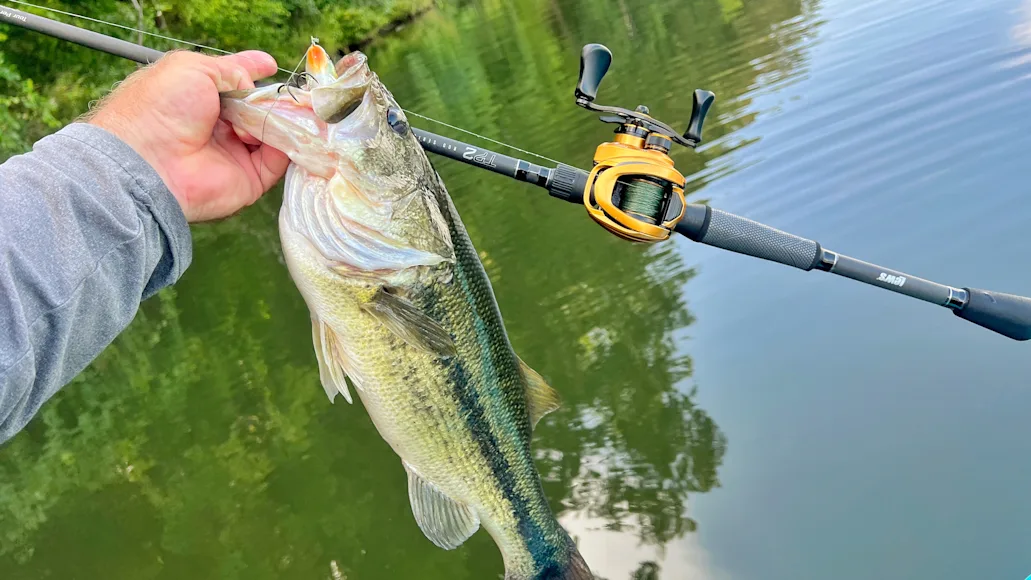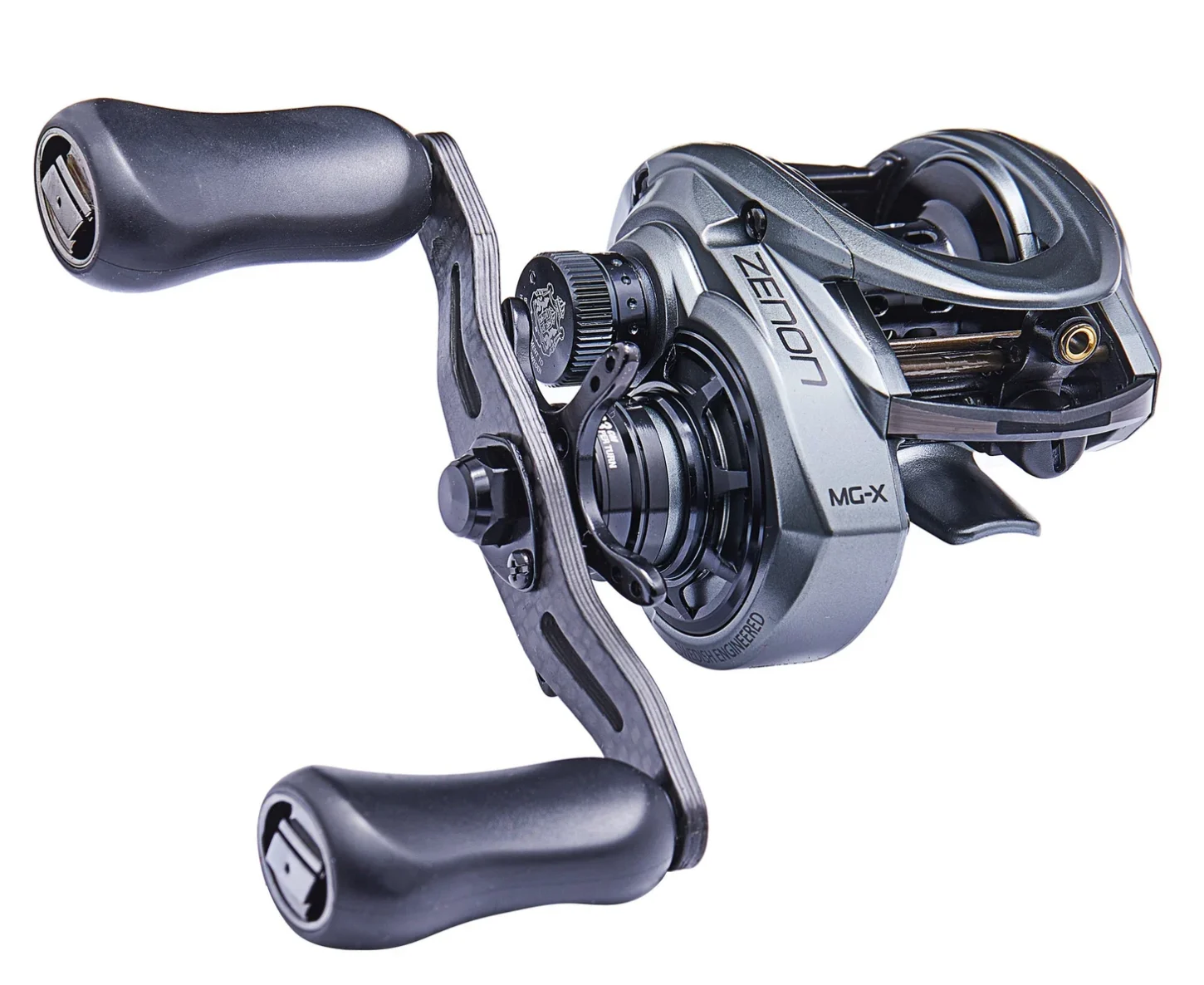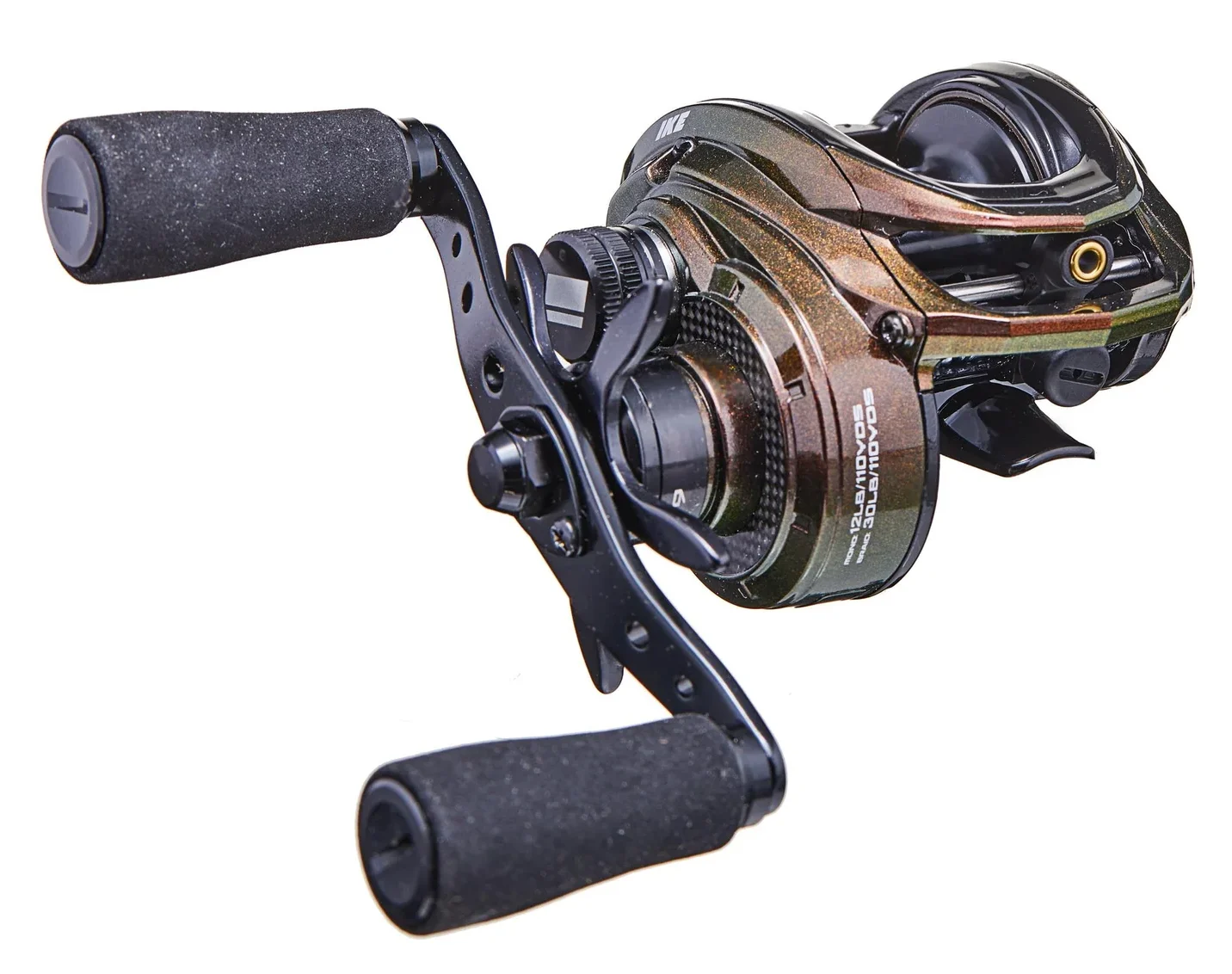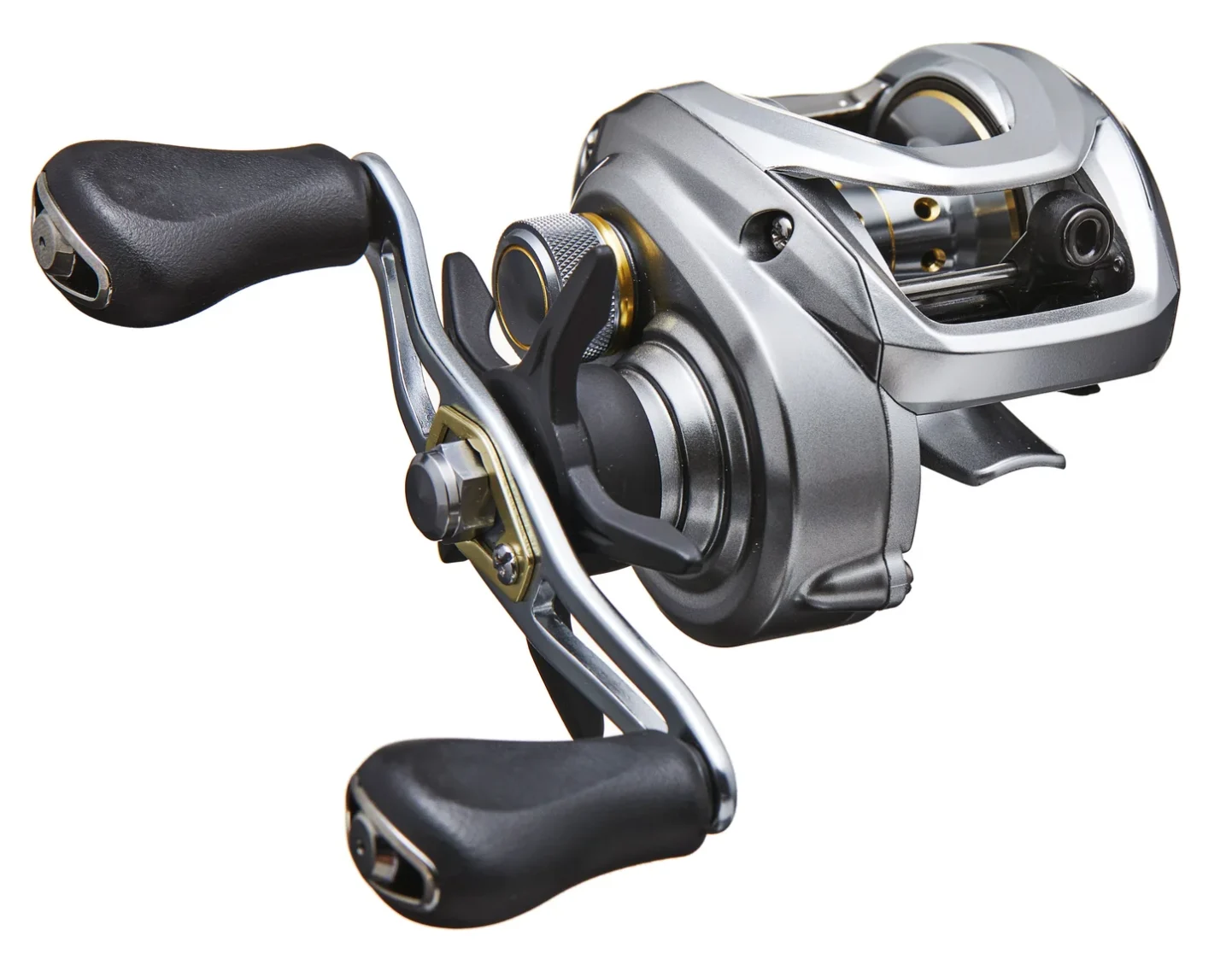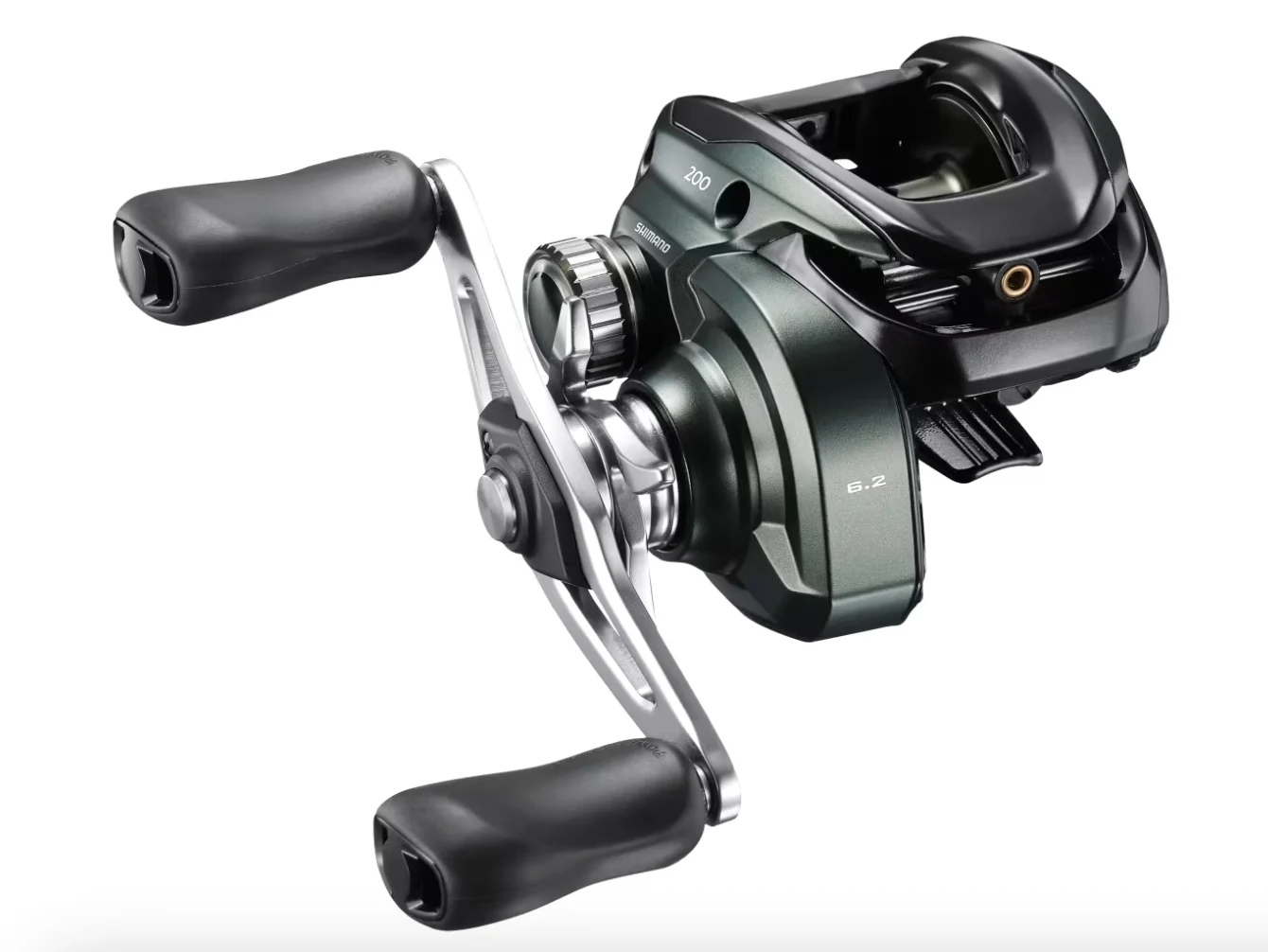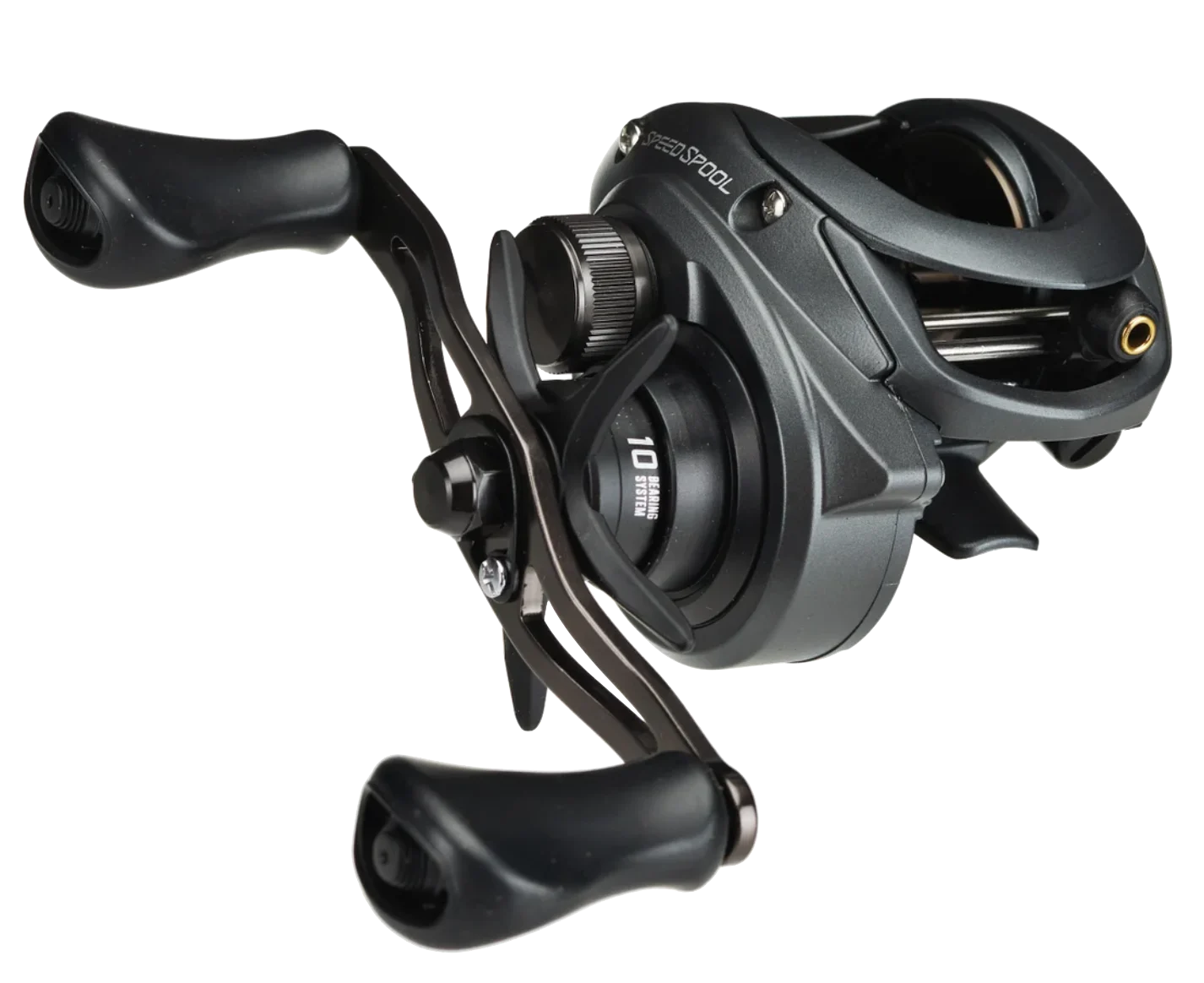We may earn revenue from the products available on this page and participate in affiliate programs. Learn more
This past summer, the editors asked me to conduct a rigorous, thorough test to find the best casting reels for bass fishing. I immediately jumped at the opportunity and started to plan. Similar to rods, reel manufacturers don't release new models every year. So I couldn't just call in a bunch of new reels. Instead, I went through my arsenal of over 30 baitcasters and picked out some of the top performers. Then I asked manufacturers to send any new models that were released in 2025.
Once I had my lineup set, I took all the reels to the water for a series of tests. Here, I compared the reels side-by-side to evaluate casting, braking, drag, and overall feel. I even had the chance to test these reels on a stocked bass pond to see how they perform against giant largemouth. At the end of the test, I narrowed the list down to seven models. Here are the best baitcasting reels you can buy today.
Best Overall: Abu Garcia Zenon MG-X
Best Value: Abu Garcia Ike Signature 3.0
Best Budget: Daiwa Aird 80
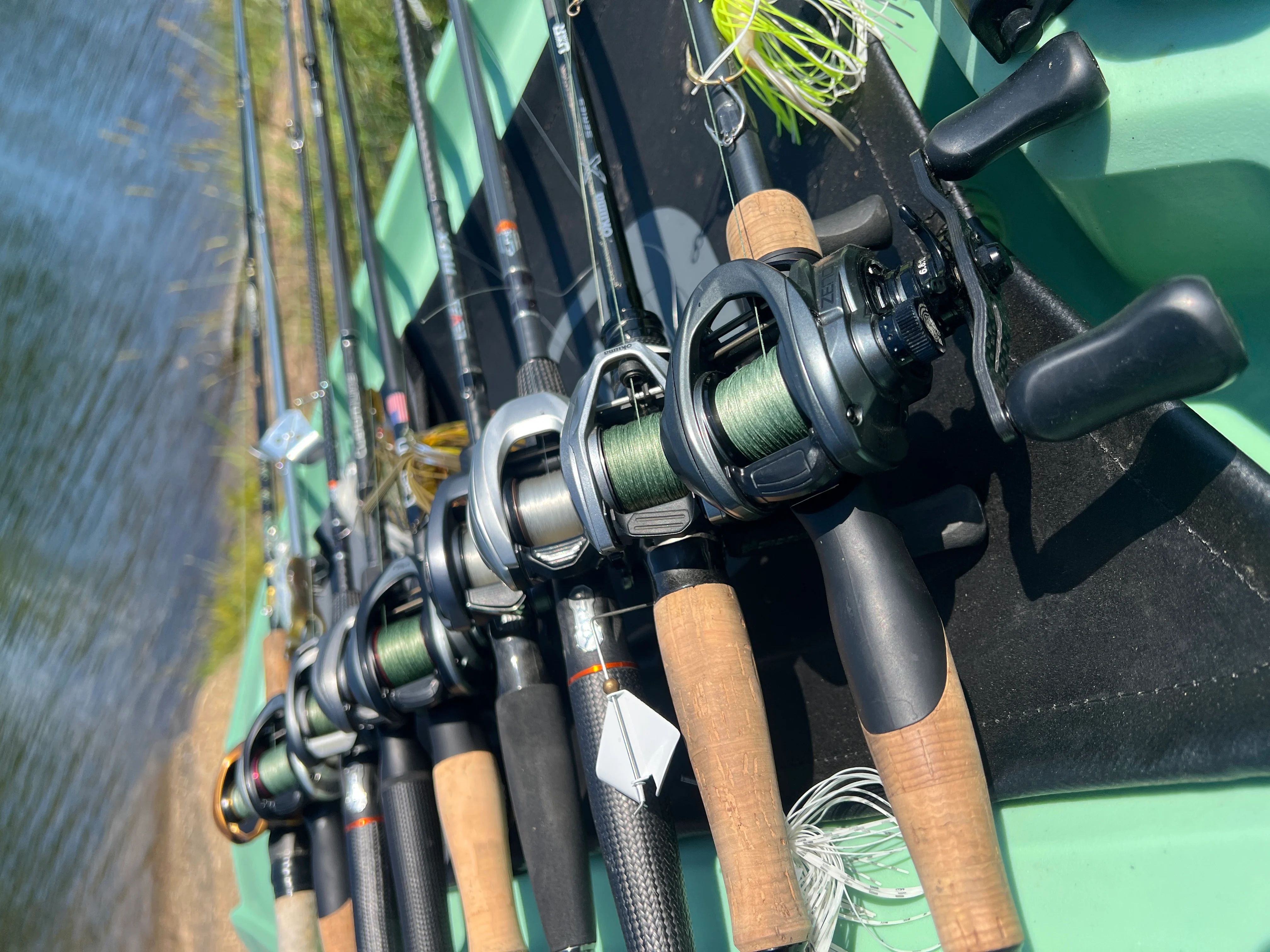
Best Overall: Abu Garcia Zenon MG-X
Specs
Retrieve: Right and left
Gear Ratio: 6.8:1 and 8.3:1
Line capacity: 12/110 lb/yards
Weight: 5.1 ounces
Bearings: 10+1
Price: $469.95
Pros
Lightweight but durable
Excellent drag
Good braking system
Cons
Expesive
I've been fishing with the Abu Garcia Zenon MG-X for over a year now, and it is hands down the best casting reel on the market. It has become my go-to reel for fishing big baits, especially spinnerbaits. Built on a one-piece X-Mag alloy frame (an Abu Garcia proprietary material) with carbon side plates, the Zenon MG-X is one of the lightest yet strongest reels on the market. It weighs only 5.1 ounces while still offering a full-size frame and enough power to handle any technique.
The bent carbon handle offers a strong grip with two big paddle knobs. Simple external controls adjust high-tech internal parts and mechanisms, such as the IVCB-4 Braking System and Carbon Matrix Drag System. Though this reel is designed to cast lightweight baits exceptionally well, it has become my favorite reel for power fishing, proving it can do it all. It is the most expensive reel we tested, but it is also the best all-around casting reel money can buy today.
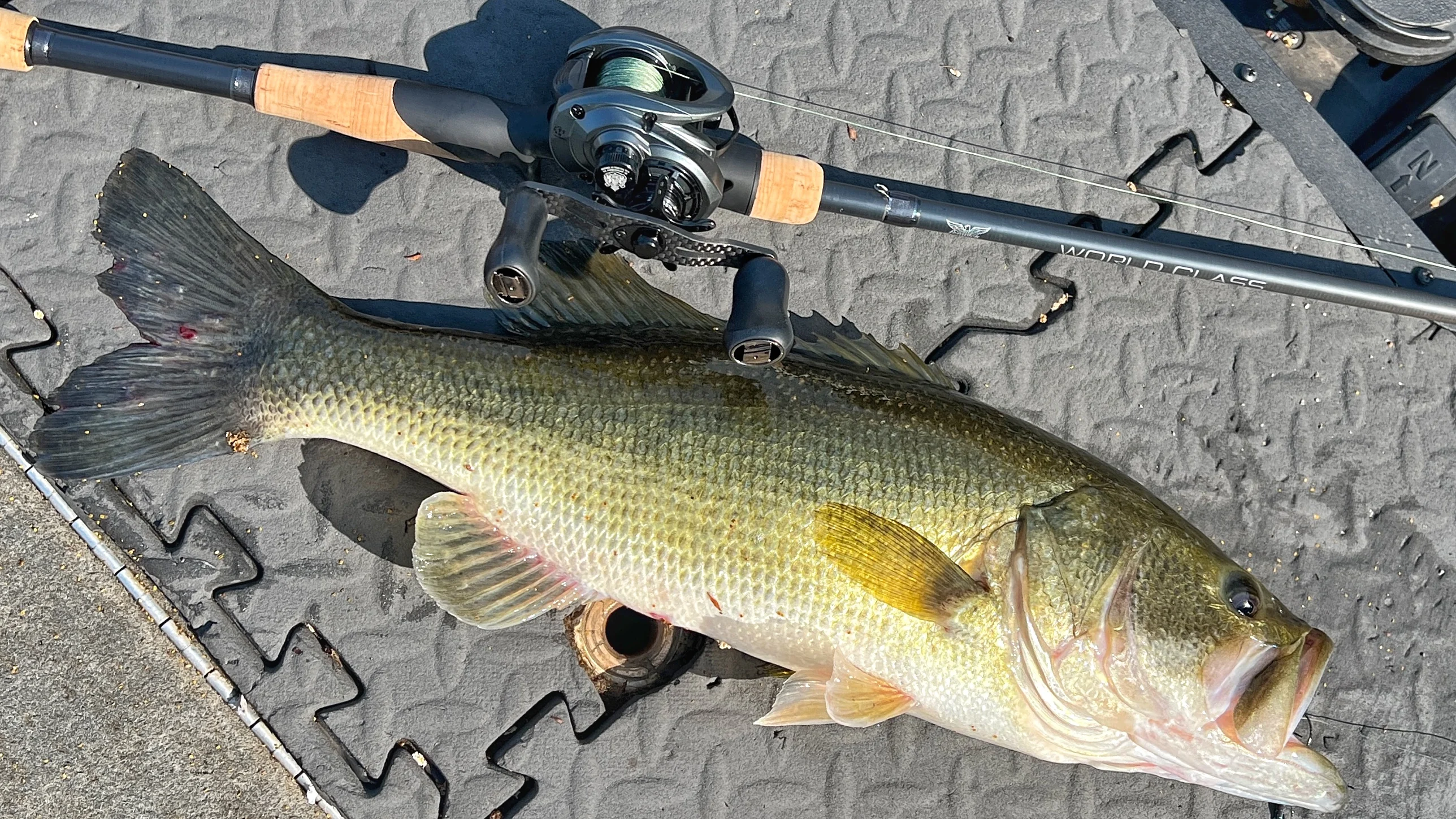
Read our full review of the Abu Garcia Zenon MG-X casting reel here.
Best Value: Abu Garcia Ike Signature 3.0
Specs
Retrieve: Right and left
Gear Ratio: 6.4:1 (right only), 7.1:1
Line capacity: 12/110 lb/yards
Weight: 7.4 ounces
Bearings: 8+1
Price: $179.95
Pros
Strong
Casts really well
Great value
Cons
Limited ratios/retrieves
While this reel is flashy and modern, the design is nothing fancy. It is simple to use, very capable, and fairly priced. There are three outer controls: a drag star, a spool tension knob, and an external brake control. The Ike 3.0 is easy to set and adjust, and once you get it dialed in, you can easily sling a bait without backlashing.
I’ve caught some good fish on the Ike 3.0 over the last year, and it’s proven to be an excellent power fishing reel. This reel cast farther, reeled smoother, and felt crisper than most of its competitors. It even outperformed a few models that were significantly more expensive.
Now, there aren’t a lot of bells and whistles to mention, but that doesn't really matter because the Ike 3.0 just gets the job done. I like the rounded, longer knobs on the handles and the simplicity of the external brake control. This is a strong and capable reel that can launch a bait a mile. It only weighs 7.4 ounces, but the frame is strong enough to throw big baits and fight giant bass. How do I know? Well, I landed several 3 to 5-pound bass on this reel, and it hauled multiple lunkers out of thick vegetation without issue. The Ike 3.0 performs well above its price point and is the best bang for your buck in casting reels.
Read our full review of the Abu Garcia Ike Signature 3.0 here.
Best Budget: Daiwa Aird 80
Specs
Retrieve: Right and left
Gear Ratio: 7.5:1
Line Capacity: 12/110 lb/yards
Weight: 7 ounces
Bearings: 7+1
Price: $99.99
Pros
Affordable
Strong
Durable
Solid drag
Wide, firm rubberized grips
Cons
Only available in one gear ratio
Daiwa recently introduced its new Aird 80 casting reel at ICAST 2025. Amidst a turbulent landscape of tariffs, tariff talks, and uncertainty, the company brought to market a fantastic reel at a fantastic price. The Aird hits is the best reel I’ve found for $100 or less. The composite frame feels a little smaller in hand, but the 90mm handle still offers a firm grip. The only real complaint I have is that this reel doesn’t come in more gear ratios. But Daiwa does offer a right and left-hand retrieve in a 7.5:1 gear ratio.
On the water, this reel performed really well. I spent most of my time testing it with a hollow body frog. It skipped the bait well, was capable of bombing casts, and there was plenty of drag and power to fight big fish. The wide, flat paddles on the handles offer a secure grip, and the reel's reasonable 7-ounce weight is on par with several reels that cost twice as much. This is the best reel you can buy for $100.
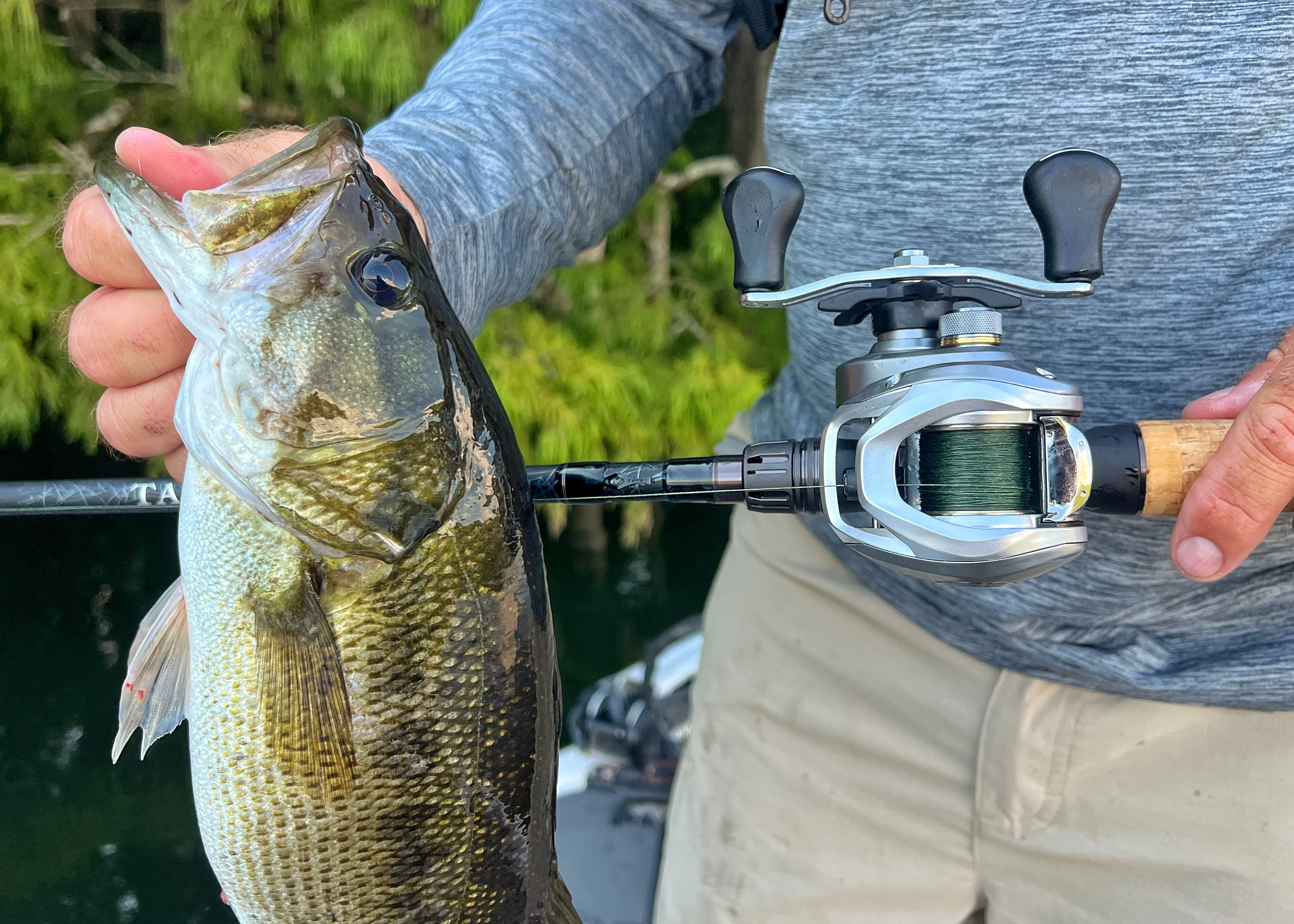
Read our full review of the Daiwa Aird 80 here.
Lew’s Custom Pro Gen 3
Specs
Retrieve: Right and left
Gear Ratio: 6.8:1 (right only), 7.5:1 and 8.3:1 (right only)
Line Capacity: 12/90 lb/yards
Weight: 5.6 ounces
Bearings: 11+2
Price: $299.99
Pros
Excellent braking system
Smooth to cast
Strong and durable
Lightweight
Cons
Expensive
The Lew’s Custom Pro Gen 3 was a top contender for the Best Overall category. This butter-smooth reel casts phenomenally, thanks to the ParaMag ITB braking system, which uses magnets to slow the spool instead of traditional friction brakes. As smooth as this reel is to cast, it’s even smoother to reel. At only 5.6 ounces and chock full of little features like the Speed Knot, which allows you to quickly attach your line to the spool. The Lew’s Custom Gen 3 is a modern marvel and one of the best reels on the market right now.

Lew’s HyperMag
Specs
Retrieve: Right and left
Gear Ratio: 7.5:1 (right only) and 8.3:1
Line capacity: 12/110 lb/yards
Weight: 5.2 ounces
Bearings: 10+1
Price: $379.99
Pros
Lightweight
Powerful
Versatile
Cons
Expemsive
The Lew’s HyperMag was another top contender in the Best Overall category. This reel handles both big baits and small baits really well, and is super light at 5.2 ounces. The Winn knobs and 95 mm bowed carbon handle bring power and control to the equation. This reel also features the Speed Knot attachment system, which lets you tie a simple overhand knot on the end of your line, insert it into a hole on the spool, and then secure the line to the spool. It also features the Speed Line indicator on the surface of the spool tension knob, which lets you dial in the exact pound test of your line. Take a coin and give the indicator a turn when you spool your reel, and you never have to wonder what size line is on your reel again.
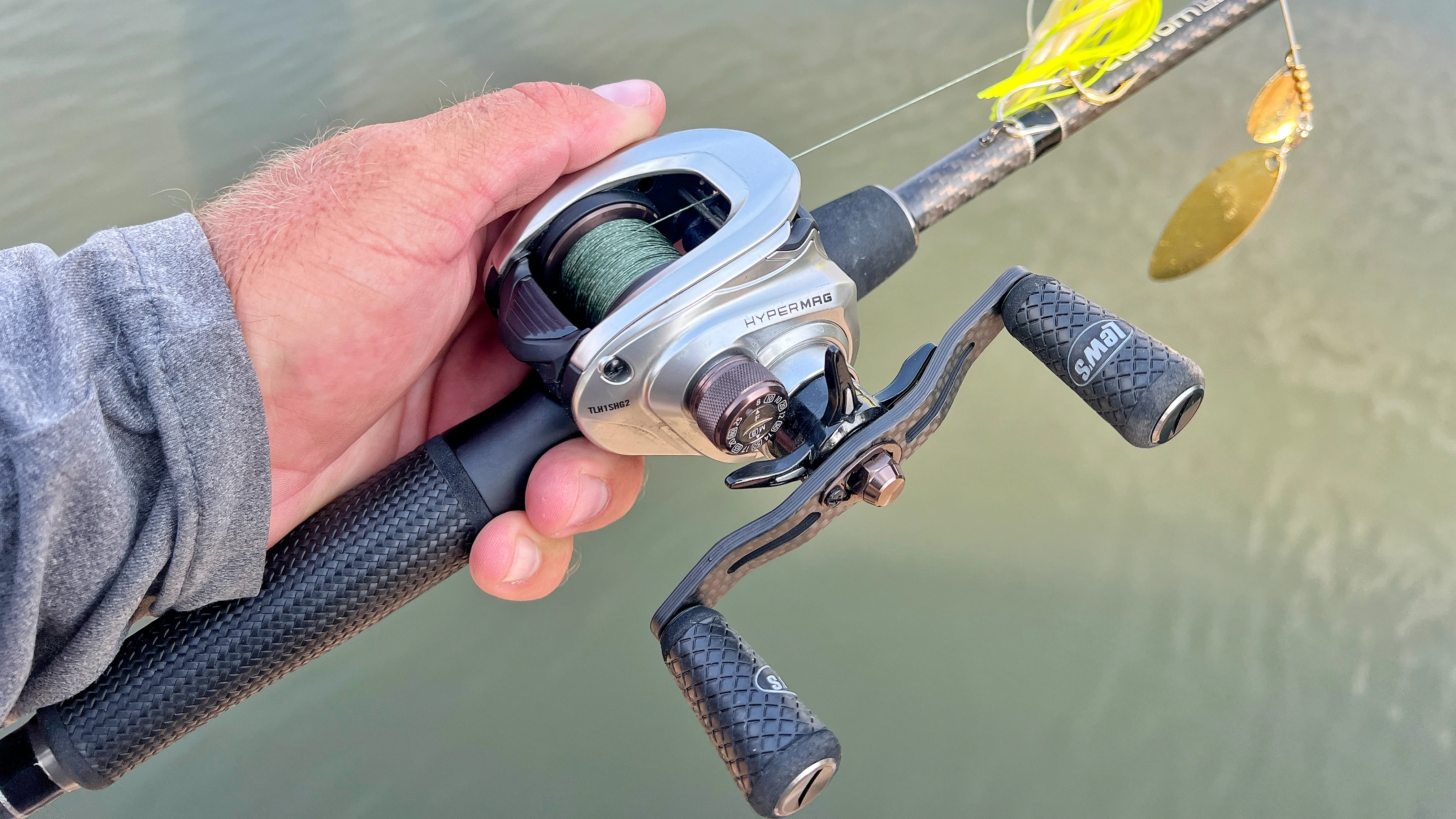
Shimano Curado 200 M
Specs
Retrieve: Right and left
Gear Ratio: 6.2:1, 7.4:1 and 8.5:1
Line capacity: 10/155 lb/yards
Weight: 7.4-7.6 ounces
Bearings: 6+1
Price: $224.99
Pros
Strong
Fights big fish well
Well-designed
Cons
A tad heavy
Expensive
The Shimano Curado M was the runner-up for the Best Value award. Still, this is a phenomenal reel for a reasonable price. It has found its way into my tournament arsenal, and I feel confident relying on it in meaningful situations. Building on the iconic legacy of the Curado, the Curado 200 M is a workhorse with a dozen proprietary parts and processes that go into its construction. What stands out to me most is its raw power. At seven and a half ounces, this isn’t a light reel. It feels firm and solid in hand, casts really well, and fights big fish even better. If you’re a fan of the Curado, this will feel right at home in your hand and is one of Shimano's best.

Lew’s Speed Spool Gen 3
Specs
Retrieve: Right and left
Gear Ratio: 5.6:1, 6.8:1, 7.5:1 and 8.3:1
Line capacity: 12/120 lb/yards
Weight: 7 ounces
Bearings: 9+1
Price: $139.99
Pros
Great value
Versatile for different techniques
Eight models available
Cons
Durability concerns over the long term
The Lew’s Speed Spool Gen 3 is a great reel for the price. What makes the speed spool special? It lends itself well to both finesse and power fishing techniques. There are also eight models available. It’s on par weight-wise with most reels, and the 10 ball bearings put it toward the front of the pack. The Speed Spool Gen 3 performed well in the tests, but still finished below other models. That said, this is a good mid-range reel that won't break the bank while offering versatility for a variety of bass fishing techniques.
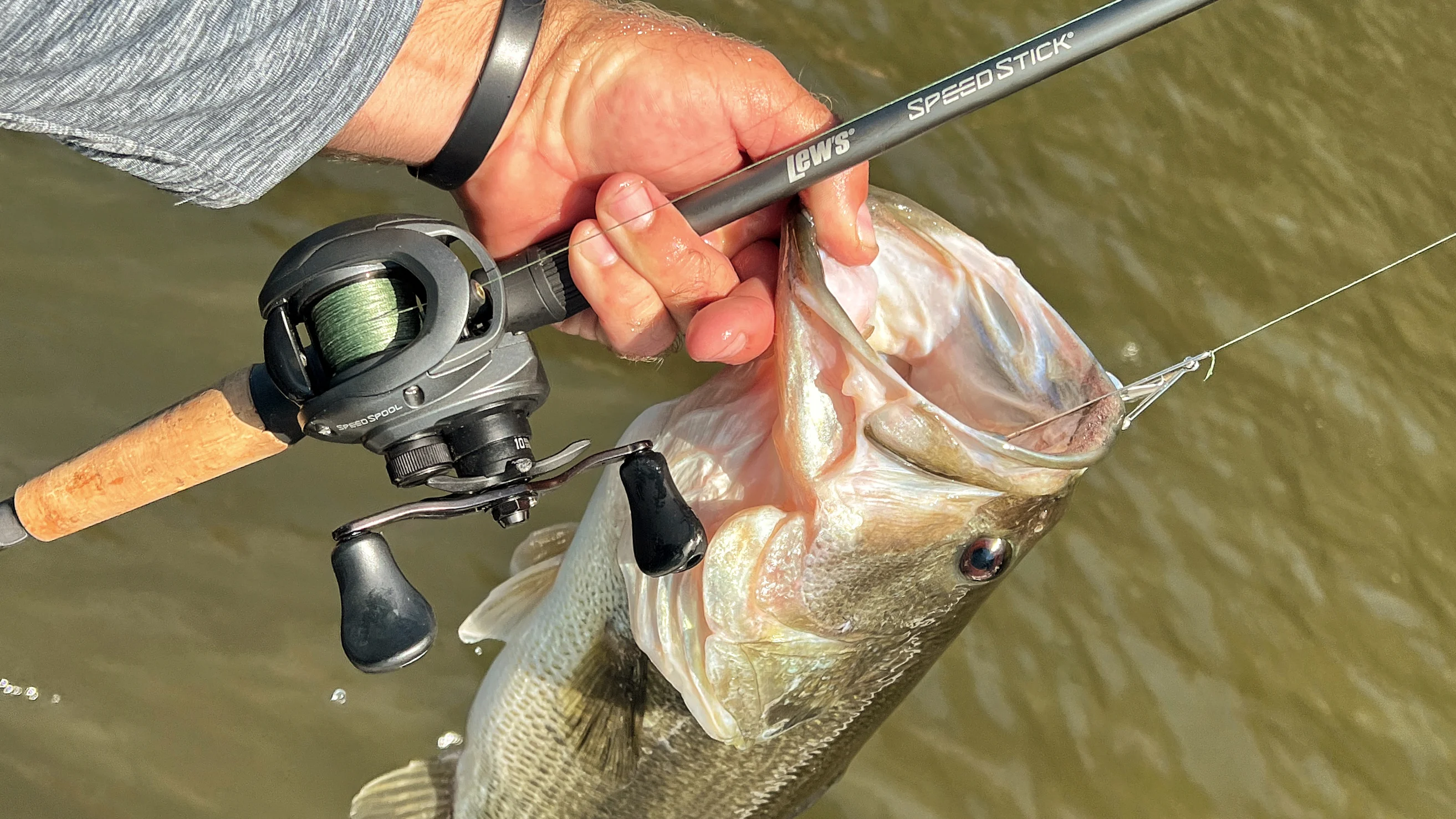
FAQs
Q: When is baitcasting better than spinning?
A decade or two ago, many bass anglers used 10-pound test as the crossover point, going with spinning for anything at or below that mark and baitcasting for anything at or above it. Now there are powerful spinning tools and baitcasters that excel at finesse.
If you’re not an experienced caster, you may want to err toward spinning when casting into the wind or using lighter lures, but that’s no longer a hard and fast rule. Baitcast reels allow you to make more casts over a day. This is because you disengage the spool with a press of your thumb, rather than having to flip a bail. Most serious flippers and pitchers also use baitcasting gear because you can re-engage the reel more quickly, allowing you to set the hook on a fish that eats your lure before it hits the bottom.
Q: What baitcasters do the pros use?
For many years, Shimano, Daiwa, Abu Garcia, and Quantum were the most frequently cited among tournament winners. However, Lew’s has come on strong and can now be found on many professional boats. Other brands, including 13 Fishing, KastKing, Ardent, Favorite, Okuma, and Duckett, are also coming on strong. Even brands that have historically been saltwater-focused, like Penn, have viable tools for the bass world.
Q: What is the best baitcasting reel on the market?
The Abu Garcia Zenon MG-X won our casting reel test and excels in everything you could ask for from a baitcaster.
Why Trust Us
For more than 125 years, Field & Stream has been providing readers with honest and authentic coverage of outdoor gear. Our writers and editors eat, sleep, and breathe the outdoors, and that passion comes through in our product reviews. You can count on F&S to keep you up to date on the best new gear. And when we write about a product—whether it’s a bass lure or a backpack—we cover the good and the bad, so you know exactly what to expect before you decide to make a purchase.

